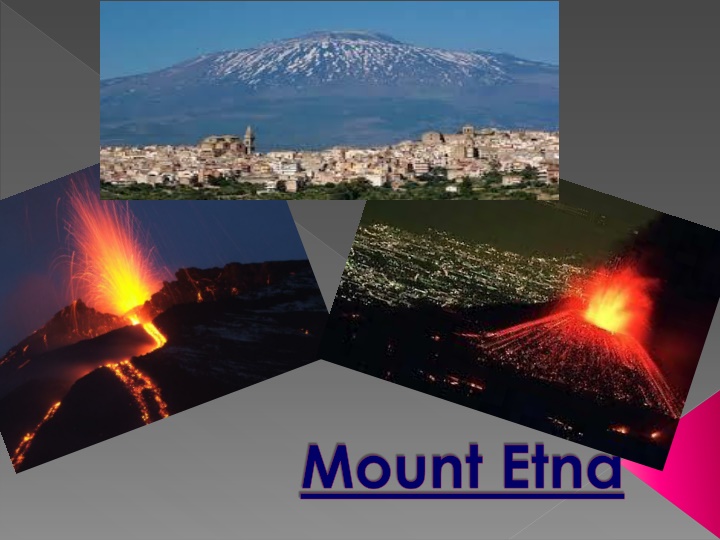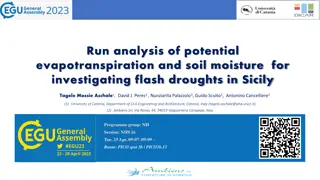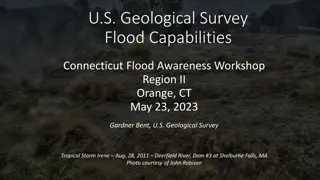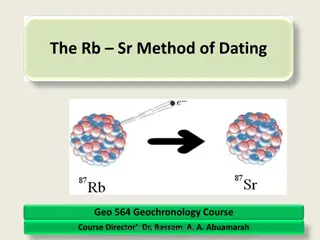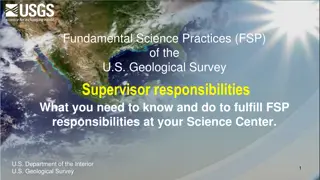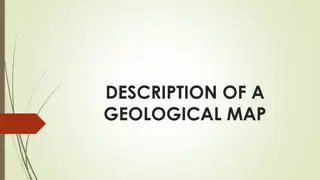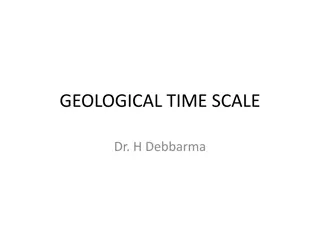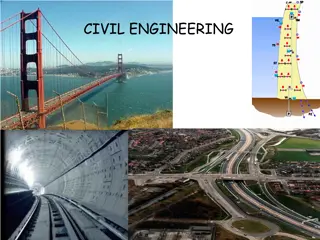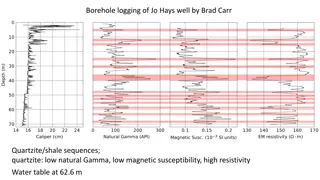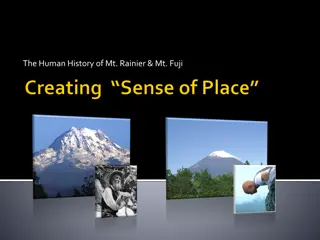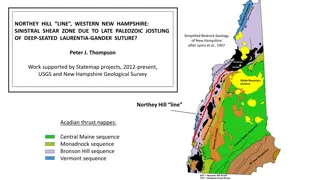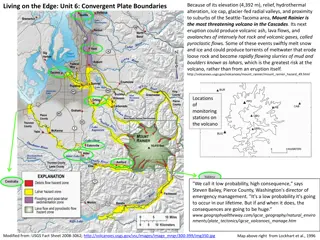Discovering Mount Etna: A Geological Wonder in Sicily
Unveil the mysteries of Mount Etna, an active volcano in Sicily, through its history, location, and fascinating facts. Learn about the rocks it produces, its UNESCO World Heritage Site status, and unique geological features. Explore its significance in tourism and agriculture while understanding the tectonic forces at play near this majestic volcano.
Download Presentation

Please find below an Image/Link to download the presentation.
The content on the website is provided AS IS for your information and personal use only. It may not be sold, licensed, or shared on other websites without obtaining consent from the author.If you encounter any issues during the download, it is possible that the publisher has removed the file from their server.
You are allowed to download the files provided on this website for personal or commercial use, subject to the condition that they are used lawfully. All files are the property of their respective owners.
The content on the website is provided AS IS for your information and personal use only. It may not be sold, licensed, or shared on other websites without obtaining consent from the author.
E N D
Presentation Transcript
Introduction Mount Etna eruptions Tourism Mount Etna Location History of Etna Facts about Etna Rocks produced from Etna
Introduction My project will inform you about Mount Etna. What is Mount Etna and where is it located, its history and some interesting facts. It will discuss what rocks are produced by Etna, and why she is listed as a world heritage site. I hope you enjoy this presentation.
Location Mount Etna is an active volcano which is located on the east coast of the Italian island of Sicily, in the Mediterranean. The volcano covers a huge area of over 460 square miles. About one quarter of the population of the island of Sicily lives on its slopes.
World Heritage Site Mount Etna is a world heritage site. A world heritage site is a man-made or naturally made site, area or structure. It has been recognized to be of national importance in need of special protection. The sites are chosen by the world heritage convention which is made by the organization called UNESCO.
Stromboli Mount Vesuvius Monte Vulture Vulcano Monte Cavo Monte Nuovo Other Volcanos in Italy
Facts on Etna Etna is still growing after 500,000 years. She is 3,350 m above sea level Mount Etna is a very dangerous volcano, as it is still active and can erupt at any time. Etna is on the east cost of Sicily and is in the province of Catania, between Catania and Messina. It is the main reason for tourism and agriculture because of the rich volcanic soil.
Interesting Facts Etna lies near the subduction zone boundary of two tectonic plates (European and African). A subduction zone is a region of the Earth's crust where tectonic plates meet. Tectonic plates are massive pieces of the Earth's crust that interact with each other. The places where these plates meet are called plate boundaries. This type of boundary would usually cause explosive and violent ash cloud eruptions like Vesuvius and the Aeolian Islands. However, unlike the neighbouring Aeolian Islands the activity is more like Hawaii, with basaltic lava flows and fountains. So its origins remain a geological puzzle but the lava certainly comes from a direct route from the mantle probably due to extension on the overlying plate rather than the accepted magma generation process caused by a subduction zone.
History In 1669, the townspeople of Catania made one of the first known attempts at damage control by digging a trench to direct the lava slowly advancing upon the town. Unfortunately, the diverted lava then threatened the nearby town of Paterno, causing a brief battle that halted the attempt. Mount Etna is Europe's highest and most active volcano. It has been growing for about 500,000 years and is in the midst of a series of eruptions that began in 2001.
Tourism People tour Etna because of its ski fields during the winter and beautiful scenery. There are chair lifts that take you up Etna to ski on the slopes. Also, you can drive around the mountain and go taste wine, including many of its local produce. The views from Etna are fantastic. You can see the City of Catania and coast line of Sicily.
Mount Etnas eruptions Mount Etna is one of the most active volcanoes in the world. Almost half of Etna s major eruptions have happened during the last 100 years. The most violent eruption was in March, 1669. The mountain erupted lava for several days which destroyed many villages including the city of Catania. 1,500 people were killed when the town of Nicolosi was destroyed by an earthquake originating beneath Mount Etna.
A river of lava A river of molten lava flows through a channel in hardened lava after an eruption at Mount Etna. Mount Etna, one of Europe's most active volcanoes, was created by the subduction of part of the northward-moving African plate beneath the Eurasian plate. The lava is more than 1000 degrees.
The rocks from Etna Many people in Catania use Etna s rocks for construction. They use it to build their homes, retaining walls, steps and other features. This option is cheap and sustainable
I hope you enjoyed my project on Mount Etna. By Natalia Guarnaccia
